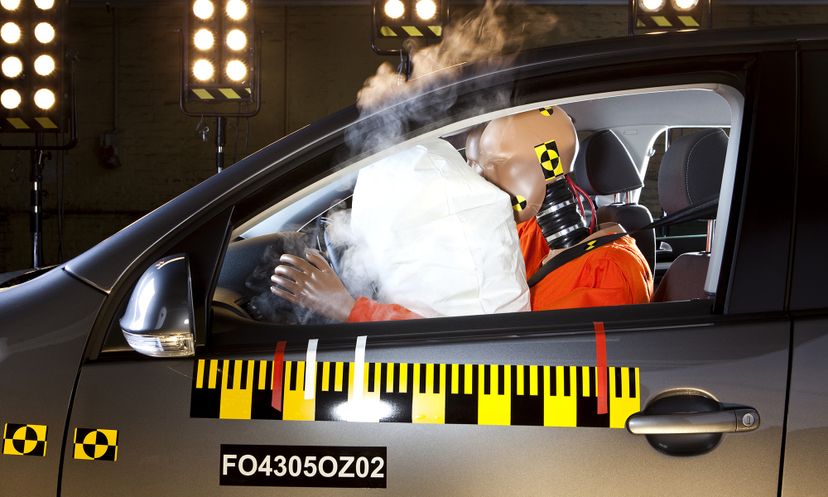
About This Quiz
Thousands of people are involved in car crashes each day. There are a number of things you can do to reduce the risks involved with riding in automobiles. Find out if you're a car-safety whiz or a crash test dummy in this quiz.According to the National Highway Traffic and Safety Administration , seatbelts reduce the risk of death for front seat occupants by about 50 percent.
Typical seatbelts, which consist of a lap belt and shoulder belt, apply most of the stopping force to your rib cage and pelvis -- relatively sturdy parts of the body.
Instead of the entire car coming to an abrupt stop when encountering an obstacle, the crumple zone absorbs some of the force from the impact, preventing it from being transmitted to the occupants.
Advertisement
When you press the brakes, ABS pumps the brakes many times per second, preventing wheel lockup and helping you to maintain steering control.
Tempered safety glass, which has been heated and then quickly cooled in order for it to harden, is five to 10 times stronger than untempered glass.
Statistics show that airbags reduce the risk of dying in a direct frontal crash by about 30 percent.
Advertisement
Upon impact, the inflation system reacts sodium azide with potassium nitrate to produce nitrogen gas that inflates the airbag.
Placing yourself 10 inches (25.4 centimeters) away from the airbag gives you a clear margin of safety. You can measure this distance from the center of the steering wheel to your breastbone.
Children older than one year and heavier than around 20 pounds (9.1 kilograms) are ready for a forward-facing child seat.
Advertisement
Children ready to use an adult seatbelt without the aid of a booster seat will be around 4 feet, 9 inches (1.5 meters) tall and about eight years old. Since children greatly vary in size by age, some may not be ready to use an adult seatbelt until the age of 10 or older.